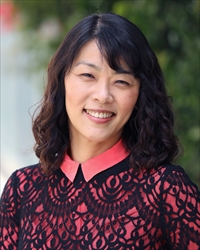
The joy and excitement that I felt at the start and 100-day mark of the year have continued all the way through as we wrap up my first year leading our outstanding Chinese Program. When I joined CAIS last summer, I already was connected and familiar with many of my new colleagues thanks to CAIS’s leading role in the Mandarin immersion community. Even so, it has been a thrill getting to know our teachers, administrators, and especially students, and work side-by-side with them to take something great and continue to make it better still.
Our Strategic Vision sums up much of what I feel when we talk about Reimagining CAIS and Reimagining Immersion. I am so happy to be part of a team that never rests on its laurels, but continues to advance our work and the mission. This has been true of CAIS ever since we first created Mandarin immersion education in the US 41 years ago. It is an honor to lead the efforts at what Head of School Jeff Bissell calls, “a lighthouse school.” Below are some highlights from this school year that illustrate how we work to lead the way in Mandarin immersion.
Proficiency After Preschool
With our move to full immersion in the Preschool this year, we have been keeping a close eye on progress and impact. Preschool Director Chu Hsi Tseng has been assessing the learning environment for early childhood education and promoting best practices in classroom set up. At the same time, I have been working with Chu Hsi Tseng and ECD Head Wei Qian to understand how best to gather data on proficiency. We have a long history of assessing our program by looking at students’ Chinese proficiency at the division milestones (fifth grade and eighth grade) using the Oral Proficiency Interview (OPI). Each year, when sharing the results, we explain that the OPI is the best tool available, but is built for adults rather than for our age groups specifically. Of course, there is another important division milestone—Preschool 4—at which we would like to assess students’ language development, but the current tools available were not a good fit for this age group nor for our program.
As part of Chu Hsi Tseng’s study of the Preschool program quality, we took matters into our own hands and created an Oracy Assessment for Preschool 4 students ourselves this year! I brought my deep understanding of second language acquisition and Chu Hsi Tseng brought her extensive early childhood expertise. (See below for more details on the presentation we made at NCLC.) Rather than measuring proficiency level based on the ACTFL standards (which are designed for older students), we instead based our standards on early childhood educational developmental stages/milestones in English and mapped those to Chinese language. We have trained teachers on how to conduct oral assessment. This will be used as a data marker in the future as an important point in a student’s journey through CAIS.
Coordinating the Reading System Throughout K-8th
This year, Kindergarten and Middle School have begun to pick up the reading system (Level Learning) used in 1st-5th grade Chinese. Middle School students are familiar with the system from their previous grades and teachers have embraced the idea of using this as the Level Learning App goes hand in hand with pedagogical practices. Kindergarten Chinese have been consistently focusing on oral and listening skills. This year Yang Laoshi and An Laoshi have been intentionally aligning their students’ pre-reading skills with the Level Learning system that is used in later grades. It is exciting to see how we’re extending the shared experience from K through 8th grade!
Beginning in 2020, CAIS embarked on an ambitious Strategic Vision that included Reimagining Immersion. We established as a long-term goal that, “CAIS students achieve Chinese proficiency levels that enable them to engage with confidence in interesting and meaningful classroom projects and in real-life situations, while simultaneously developing competencies that extend far beyond language learning.” The pandemic hasn’t derailed our resolve nor our efforts. I am gratified by all that our community has accomplished this year and feel confident that we are well on our way to meeting the bright future laid out in the Strategic Vision! As I shared at today’s Educational Leadership Team Meeting, what I’m most proud of is that these initiatives are a victory for our Chinese Program at CAIS.
Looking forward to next year,
Cindy Chiang | 姜欣怡
(她 she/her/hers)
Chinese Program Director 中文部主任

